YOUR CHILDREN DESERVE…
BEAUTIFUL BROAD SMILES
By using functional appliances while children are actively growing, we can help them achieve a beautiful broad smile. Mouth-breathing can cause narrow arches and unattractive smiles.

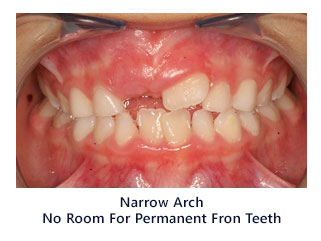
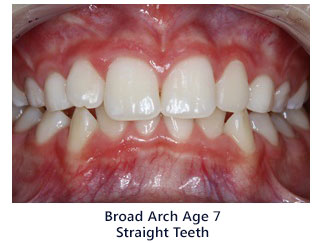
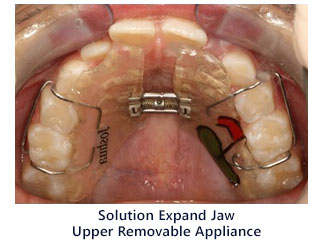
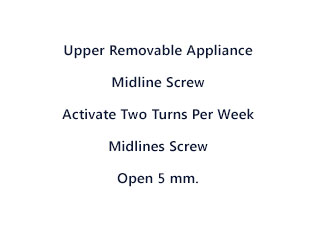
Early Treatment
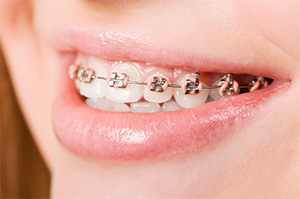
 Children should be evaluated as early as age 5 in order to guide the growth of the child and the eruption of the permanent teeth. Early treatment can regulate the width of the upper and lower arches (jaws), gain space for the permanent teeth, avoid the need for permanent tooth extractions. Also, reduces the likelihood of impacted permanent teeth (avoid the “fang look”), correct thumb-sucking, and eliminate abnormal swallowing and speech problems. In other words, early treatment can solve many problems and prevent more complicated and costly treatment later on.
Children should be evaluated as early as age 5 in order to guide the growth of the child and the eruption of the permanent teeth. Early treatment can regulate the width of the upper and lower arches (jaws), gain space for the permanent teeth, avoid the need for permanent tooth extractions. Also, reduces the likelihood of impacted permanent teeth (avoid the “fang look”), correct thumb-sucking, and eliminate abnormal swallowing and speech problems. In other words, early treatment can solve many problems and prevent more complicated and costly treatment later on.

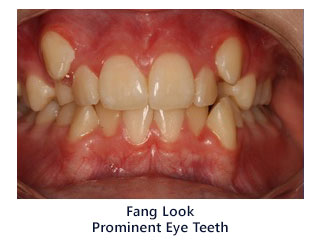
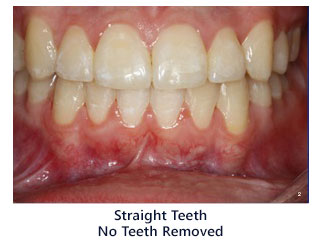
HEALTHY JAW JOINTS
Many children with narrow jaws, deep overbites or receding lower jaws have unhealthy jaw joints which can cause:
- Headaches
- Dizziness
- Fainting
- Difficulty opening jaw
- Neck Pain
- Ear aches and ringing in the ears
- Clicking or locking jaw
- Facial pain
TWIN BLOCK REMOVABLE FUNCTIONAL APPLIANCE MOVES LOWER JAW FORWARD – 7 MONTHS
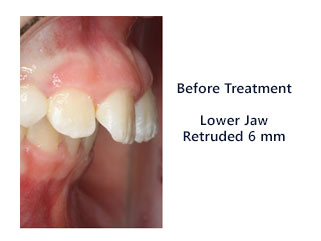
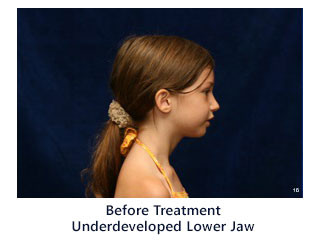
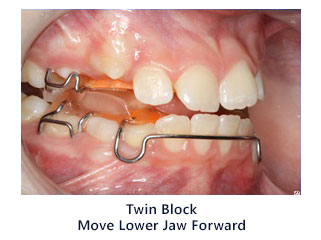
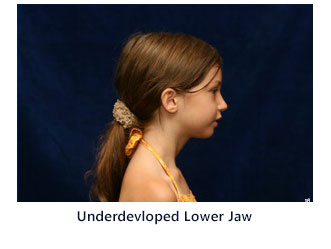
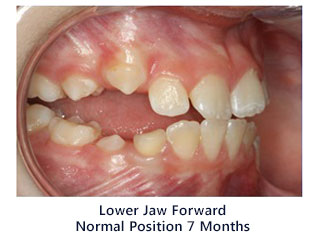
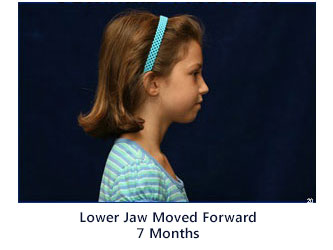
Early use of functional appliances can prevent or eliminate these problems.
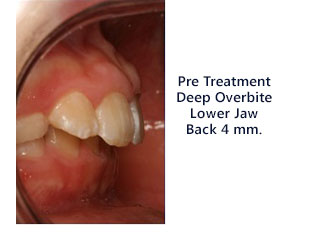
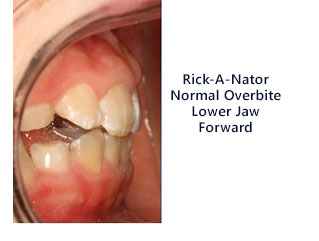
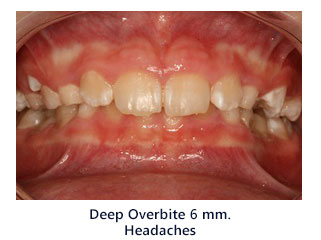
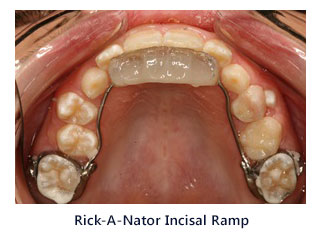
Rick-A-Nator. Fixed orthodontic appliance. Moves lower jaw forward which improves the profile. Corrects the overjet and overbite. Healthy jaw joints and eliminates headaches.

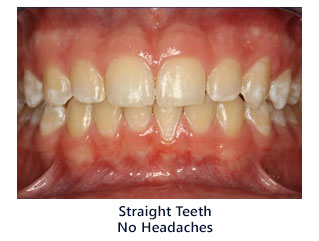
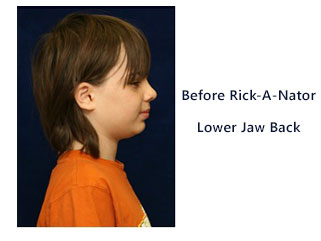

HELP YOUR CHILD TO BREATHE
Mouth-breathing can lead to orthodontic problems as well as other problems such as lack of oxygen and poor sleep habits. This leaves children prone to daytime fatigue, inability to concentrate in school and headaches. Some children stop breathing at night (sleep apnea) which research shows can be linked to a condition known as Attention Deficit Hyperactivity Disorder (ADHD). These children are often difficult to handle in school as they can become hyperactive and aggressive. These children are often prescribed strong medications. Literature has shown that the solution would be to expand the dental arches with functional appliances and to remove enlarged tonsils which are obstructing the airway. This results in increasing the level of oxygen in the blood which helps prevent ADHD and sleep apnea.
END TO EAR PAIN, RINGING & STUFFINESS
Deep overbites and receding lower jaws may cause earaches, stuffiness or ringing in the ears. If infections have been ruled out, functional appliances can be utilized to correct the deep overbite or gently move the lower jaw forward can often eliminate ear pain or stuffiness in the ear.
FACILITATED SPEECH DEVELOPMENT
Narrow jaws can confine the tongue and interfere with normal speech. Functional appliances can expand the size of the jaws which can make more room for the tongue and enhance a child’s ability to speak normally.
EARLY INTERCEPTIVE ORTHODONTICS
FUNCTIONAL APPLIANCES CAN HELP GUIDE THE GROWTH OF OUR CHILDREN AND CAN HELP CORRECT…..
- Bite problems
- Underdeveloped Jaws
- Deep overbites
- Airway problems
- Tongue thrusting habits
- Narrow arches
- Crowded teeth
- Jaw joint problems
- Thumb-sucking habits
FUNCTIONAL APPLIANCES CAN OFTEN PREVENT….
- Removal of adult teeth
- Fang like tooth appearance
- Lengthy use of braces
- Speech difficulties
- Crooked teeth
- Low Self-Esteem
TO ELIMINATE CROWDING
Crowded teeth are caused by narrow arches. By developing dental arches at an early age we may prevent the crowding of the permanent teeth. Since 90% of the face is developed by age 12, treatment of the child’s bite problems should be corrected early to avoid more costly and lengthy treatment later on. One of the main advantages of early treatment is that it prevents the need to remove adult teeth later on.
TWO PHASE TREATMENT
PHASE ONE FUNCTIONAL APPLIANCES AGE 5-12
Early treatment should be initiated for:
- Habits such as tongue thrusting or thumb-sucking
- A constricted airway due to swollen tonsils or adenoids
- Mouth-breathing or snoring problems
- Bad bite
- Bone problems (narrow or underdeveloped jaw)
- Retruded upper jaw
- Retruded lower jaw
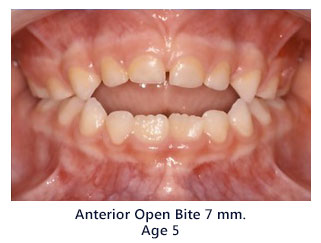
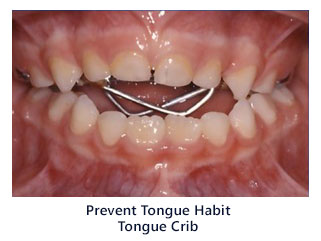
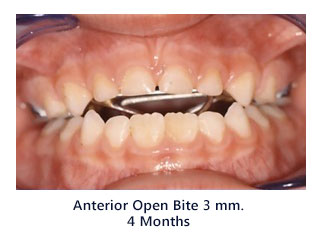
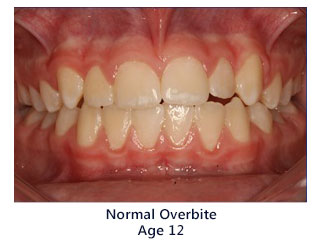
HABIT APPLIANCE – PREVENT ANTERIOR TONGUE THRUST
FACIAL DEVELOPMENT
75% of 12-year-olds need orthodontic treatment. By age 12, 90% of the child’s face has developed. By guiding facial development earlier, by using functional appliances, 80% of the treatment can be corrected before the adult teeth are present.
COOPERATION
Younger children between ages 8-11 are often more cooperative than children 12-14.
SHORTEN TREATMENT TIME
Children that start with Phase One treatment with functional appliances will spend less time in fixed braces when the adult teeth come into the mouth.
TO CORRECT UNDERDEVELOPED JAWS
Almost 50% of children who need orthodontic treatment due to a bad bite have underdeveloped lower jaws. Functional appliances can reposition the lower jaw forward, improve the child’s profile and correct the bite problems in 7-9 months.
PHASE TWO – BRACES AGES 12 OR OLDER
Teeth are straightened with braces. Braces usually take 1 ½ – 2 years.
CONCLUSION, ADVANTAGES OF TWO PHASE TREATMENT
- Can avoid more costly treatment later by eliminating the orthodontic and jaw problems early rather than delaying treatment when the problems are more serious
- Improve children’s self-esteem when crooked teeth and underdeveloped jaws are corrected early.
- Shortens the time in fixed braces. If treatment is initiated early, many times orthodontic treatment can be completed before the child goes to high school.
- Sometimes when the bad bite is solved in Phase I the patient does not need Phase II treatment. This results in a substantial cost saving to the patient.
Invisalign
When you hear the word “orthodontics,” what comes to mind? Probably a young teenager whose teeth are covered by a latticework of metal. There are indeed many orthodontic patients who fit that description. However, there now exists an increasingly popular alternative to traditional metal braces: Invisalign® clear aligners.
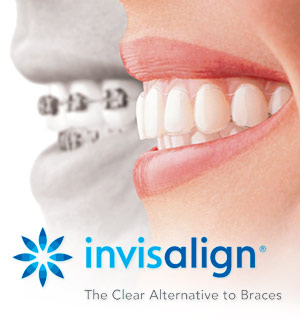 As the name implies, Invisalign clear aligners are made of almost invisible polyurethane plastic. Rather than being cemented or bonded to the teeth as metal or clear braces are, clear aligners are completely removable — for important social occasions, for eating, and, most importantly, for tooth-brushing and flossing. This advantage can also be a disadvantage: It means you must resist the temptation to take your aligners out more than is advised. Here are some other advantages of the Invisalign system:
As the name implies, Invisalign clear aligners are made of almost invisible polyurethane plastic. Rather than being cemented or bonded to the teeth as metal or clear braces are, clear aligners are completely removable — for important social occasions, for eating, and, most importantly, for tooth-brushing and flossing. This advantage can also be a disadvantage: It means you must resist the temptation to take your aligners out more than is advised. Here are some other advantages of the Invisalign system:
- Improved Oral Hygiene — With an orthodontic appliance that is removable, you will be able to clean your teeth much more easily than if you were wearing metal braces.
- A Discreet Look — If you consider your orthodontic treatment to be a private matter, or simply feel that metal braces don't fit with your self-image, a practically invisible form of orthodontic treatment might suit you.
- More Dietary Choices — To protect metal wires and braces, some diet modifications are necessary. With clear aligners, you can still bite into an apple or a crispy pizza crust.
- Comfort — The thin, flexible material of which Invisalign is made will not irritate the soft tissues of the mouth, as metal wires and braces can.
- Teeth-Grinding Protection — If you have a teeth-grinding or clenching habit, clear aligners can function as thin nightguards that will protect your teeth from excessive wear.
Clear aligner technology has been improving over the years and can correct many malocclusions that once would have been too complicated for this form of treatment. Yet there are still some situations for which traditional braces would still be best. This can be discussed in detail with you.
How Invisalign Works
Invisalign clear aligners work the same way traditional braces do: by applying carefully controlled forces to teeth to move them into a better position. But they are not made of metal; instead, they are made of clear, flexible plastic.
Here's how it works: Specialized computer software is used to design a plan for moving your teeth from their current positions into the best possible alignment. This movement will be broken down into perhaps several dozen stages. For each stage, the Invisalign company will manufacture two plastic mouth “trays” or “aligners,” one to fit over your top teeth and one for the bottom. You will wear this first set of trays for two weeks, for a minimum of 20 hours per day. You will then move on to the next set of aligners in your series to accomplish the next stage of gradual movement. You will keep doing this until your teeth are correctly aligned.
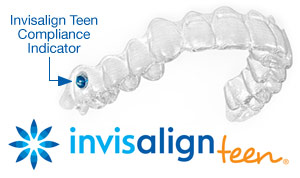 In the past several years, two features have been added to make Invisalign a more appropriate orthodontic treatment method for teenagers. Special “eruption tabs” hold the appropriate amount of space open for molars that have not fully grown in. Invisalign for teens also comes with “compliance indicators” built into the aligner material, which fade with wear. This allows parents, dentists, and the teens themselves, to make sure the trays are being worn as prescribed. Treatment with Invisalign can only be successful if this is the case.
In the past several years, two features have been added to make Invisalign a more appropriate orthodontic treatment method for teenagers. Special “eruption tabs” hold the appropriate amount of space open for molars that have not fully grown in. Invisalign for teens also comes with “compliance indicators” built into the aligner material, which fade with wear. This allows parents, dentists, and the teens themselves, to make sure the trays are being worn as prescribed. Treatment with Invisalign can only be successful if this is the case.
Caring for Your Teeth During Invisalign Treatment
As mentioned above, one of the main advantages of the Invisalign system is that the trays can be removed for easy cleaning. So please don't neglect to do this! You'll need to brush your teeth after every meal or snack so that food and plaque do not get trapped in the aligners, which could promote tooth decay and gum disease. Your aligners, too, will have to be cleaned regularly; you can do this by brushing them and then rinsing them with lukewarm water.
Also, please keep in mind that while wearing clear aligners is very different from wearing braces, the importance of retaining your post-treatment results is exactly the same. You'll want to be sure to wear your retainer(s) exactly as prescribed after your treatment is completed to protect your investment in a beautiful new smile.

